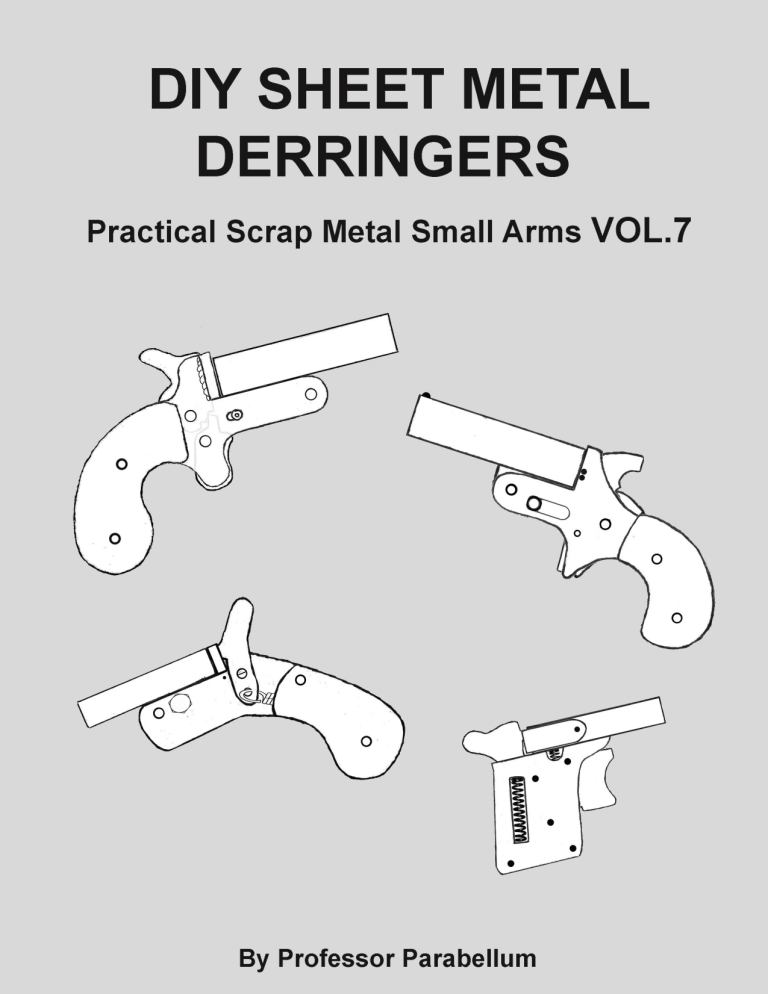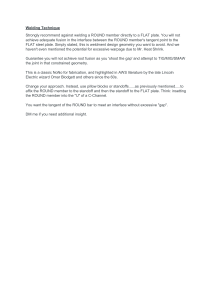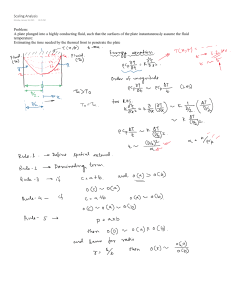254227075-DIY-Sheet-Metal-Derringers-Practical-Scrap-Metal-Small-Arms-Vol-7
advertisement

DIY Sheet Metal Derringers The following simple .22 rimfire designs utilize sheet metal plate for ease of construction without access to conventional machining equipment. Each model can be made in relatively short order and adapted to whichever materials or tools are at hand. In all instances pins or bolts can be used in place of welding or brazing. With care and attention a commercial standard of quality and functionality can be achieved. This document is intended purely for academic study purposes only. Model 1 The model featured here is copied from a commercial design of particular expedient construction. The majority of components are made from 14 gauge (2mm) and 1/4” (6mm) steel plate and are bolted or welded together. The simple mainspring set up allows for any suitable compression spring to be fitted by simply adapting the size of the frame slot. For legal reasons, the demonstration model pictured was made as a non-firing replica paperweight. It contains a permanently blocked and cut up dummy barrel and has no provisions for a firing pin. Destroyed dummy barrel of demonstration model Disassembled: note the rudimentary barrel release latch consisting of a bolt and three nuts. Accurately welding the frame plates together was achieved with the help of a piece of 6mm plate placed in between both pieces and held with a clamp. The grip insert was also cut out and temporarily bolted together to help with alignment. Only one plate had it's holes drilled before welding, after which it was drilled through into the second plate once permanently aligned. If a welder is unavailable, a longer breech piece can be slotted tightly into the frame plates and held in place with a high strength epoxy such as JB weld, or made with pins in the same manor as on the second model contained in the plans. Plans All pages included should be printed out on 8.5 x 11 US letter paper. Each component template is drawn to scale and can be cut out and glued to their respective thickness of material. Make sure the ruler at the bottom left of each sheet is 2 inches in length. Alternatively, enlarge the plans using a computer program until the ruler is the correct length, then trace the parts needed onto a sheet of paper taped over your computer's screen. Previous volumes:






